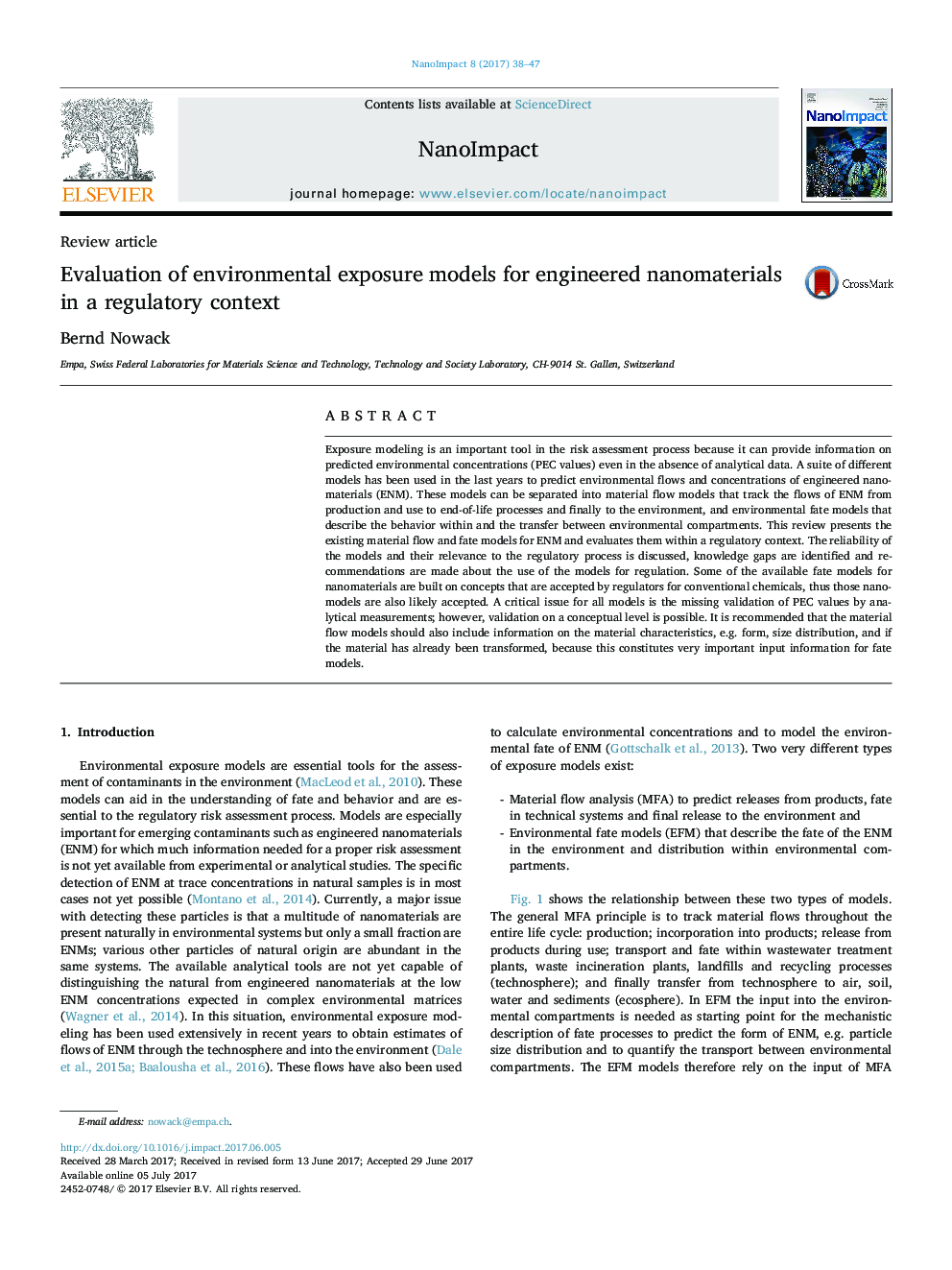| کد مقاله | کد نشریه | سال انتشار | مقاله انگلیسی | نسخه تمام متن |
|---|---|---|---|---|
| 5560740 | 1562019 | 2017 | 10 صفحه PDF | دانلود رایگان |
- Environmental exposure models for nanomaterials are reviewed in a regulatory context.
- Some fate models are based on conventional models accepted by regulators.
- Critical for all models is the missing validation of PEC values.
- Validation on conceptual level and of processes is possible.
Exposure modeling is an important tool in the risk assessment process because it can provide information on predicted environmental concentrations (PEC values) even in the absence of analytical data. A suite of different models has been used in the last years to predict environmental flows and concentrations of engineered nanomaterials (ENM). These models can be separated into material flow models that track the flows of ENM from production and use to end-of-life processes and finally to the environment, and environmental fate models that describe the behavior within and the transfer between environmental compartments. This review presents the existing material flow and fate models for ENM and evaluates them within a regulatory context. The reliability of the models and their relevance to the regulatory process is discussed, knowledge gaps are identified and recommendations are made about the use of the models for regulation. Some of the available fate models for nanomaterials are built on concepts that are accepted by regulators for conventional chemicals, thus those nano-models are also likely accepted. A critical issue for all models is the missing validation of PEC values by analytical measurements; however, validation on a conceptual level is possible. It is recommended that the material flow models should also include information on the material characteristics, e.g. form, size distribution, and if the material has already been transformed, because this constitutes very important input information for fate models.
Journal: NanoImpact - Volume 8, October 2017, Pages 38-47
